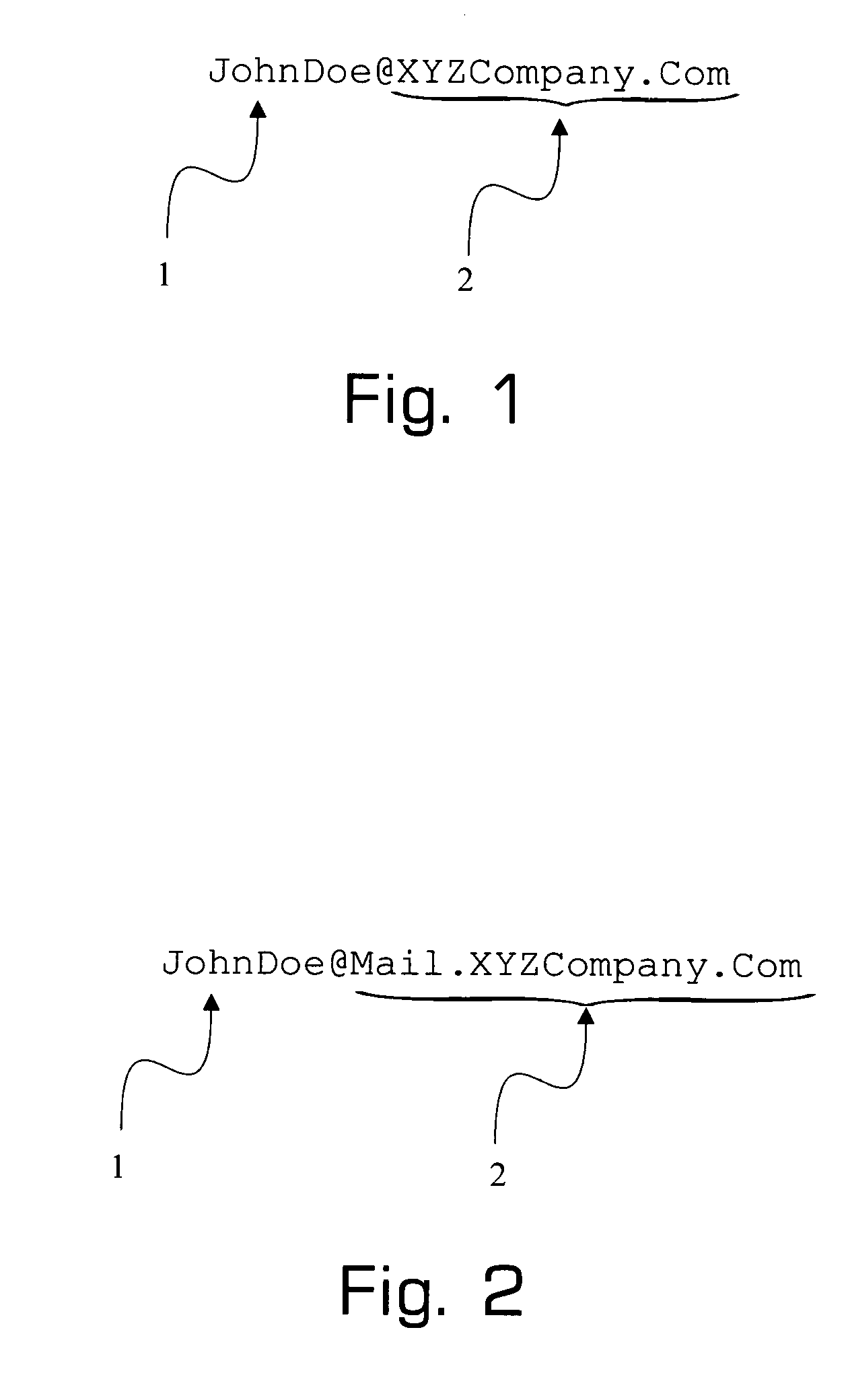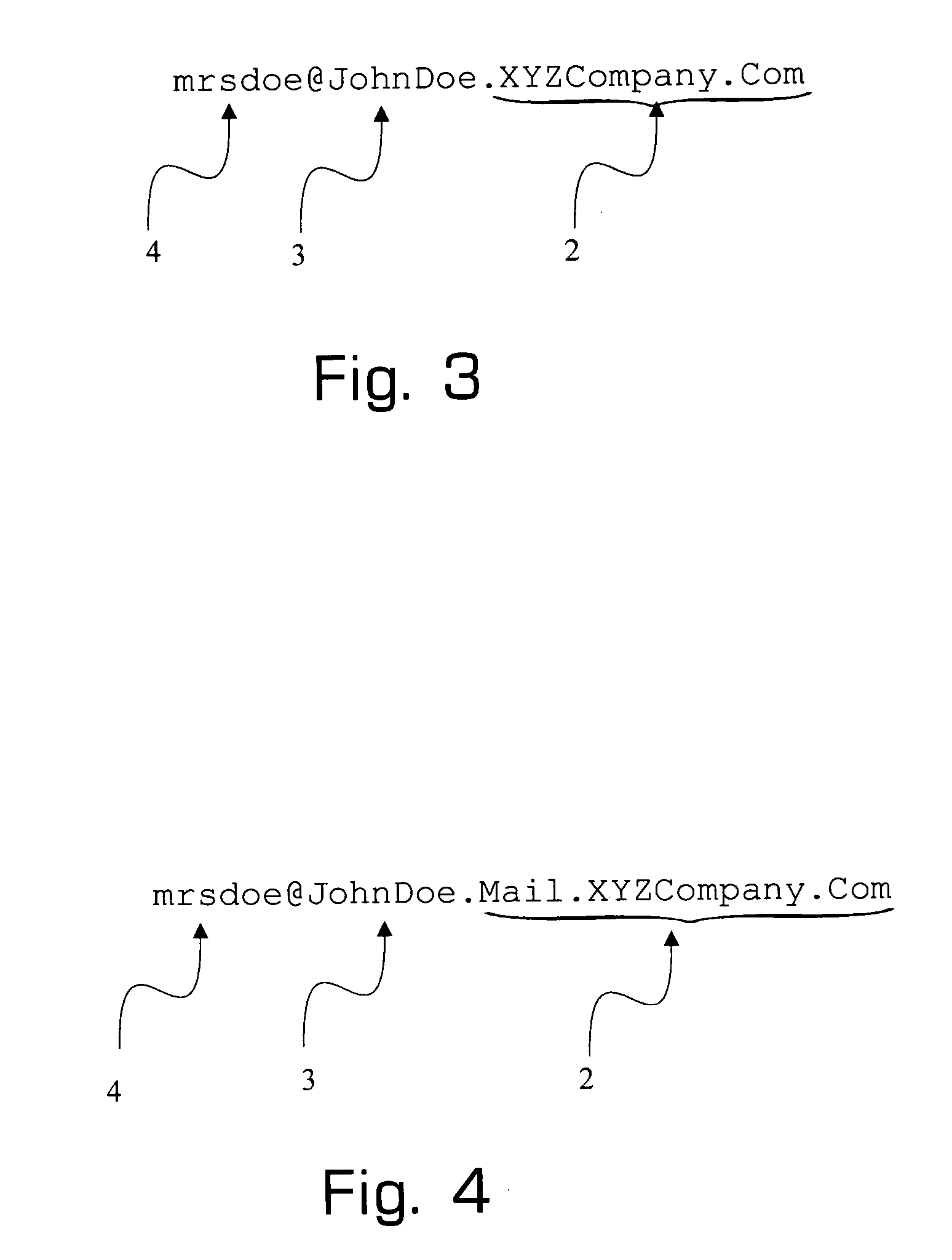System for processing electronic mail messages with specially encoded addresses
a technology of electronic mail and encoded addresses, applied in the field of electronic mail systems, can solve the problems of bogging down e-mail systems, unsolicited commercial e-mail, and largely unsuitable parameters for incoming e-mail processing, and achieve the effect of quick addition and removal and great control over blocking
- Summary
- Abstract
- Description
- Claims
- Application Information
AI Technical Summary
Benefits of technology
Problems solved by technology
Method used
Image
Examples
Embodiment Construction
[0040]The present invention presents a novel approach to e-mail message management and is particularly adaptable for the filtering, blocking and processing of unsolicited commercial e-mail. In particular, the present invention allows e-mail recipient information to be included with e-mail domain information, and a source identifier linked to one or more particular e-mail senders may be included in local-part address information. The present invention further allows end users to quickly create and destroy source identifiers, thereby permitting the ad-hoc creation and destruction of valid e-mail addresses. Furthermore, the present invention readily permits the management of sender rights and processing directives associated with source identifiers, allowing efficient management of incoming e-mail messages.
[0041]In certain preferred embodiments of the present invention, e-mail addresses adhere to RFC2822. FIG. 1 depicts an e-mail address which adheres to RFC2822 but which is not encode...
PUM
 Login to View More
Login to View More Abstract
Description
Claims
Application Information
 Login to View More
Login to View More - R&D
- Intellectual Property
- Life Sciences
- Materials
- Tech Scout
- Unparalleled Data Quality
- Higher Quality Content
- 60% Fewer Hallucinations
Browse by: Latest US Patents, China's latest patents, Technical Efficacy Thesaurus, Application Domain, Technology Topic, Popular Technical Reports.
© 2025 PatSnap. All rights reserved.Legal|Privacy policy|Modern Slavery Act Transparency Statement|Sitemap|About US| Contact US: help@patsnap.com



